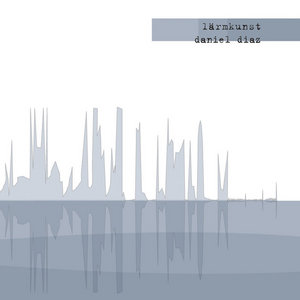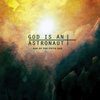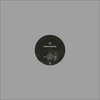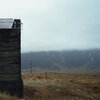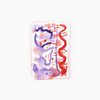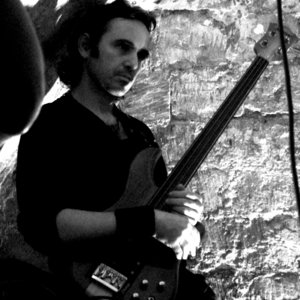Lärmkunst by Daniel Diaz
Tracklist
| 1. | clockworks 1 analog/metronomikas | 2:20 |
| 2. | lärmkunst main theme | 3:41 |
| 3. | bamboo lärmgroove | 2:16 |
| 4. | lärmkunst piano | 3:20 |
| 5. | daktilograficas | 3:14 |
| 6. | flutes ambient | 3:05 |
| 7. | bamboo metronomes: the painfull clixs | 2:27 |
| 8. | lärmkunst noisy theme | 3:37 |
| 9. | clockworks 2 digitales | 2:31 |
| 10. | guitars distort | 3:07 |
| 11. | soudain… opening sequence | 2:44 |
| 12. | soudain… guitar noise & drone | 1:37 |
| 13. | soudain… finale | 3:52 |
| 14. | soudain… main theme | 5:22 |
| 15. | lärmkunst folk | 4:15 |
| 16. | clockworks 3 bad ben | 2:35 |
| 17. | lärmkunst deconstructed theme | 4:45 |
| 18. | blow... | 2:28 |
| 19. | …wind blow | 2:17 |
| 20. | lärmkunst final theme | 4:16 |
Credits
released December 10, 2010
Composed and performed by Daniel Diaz, Paris France & Greece, 2010
Art by Sergio Pittaluga
Liner Notes:
The original idea was purely experimental:
noise as music + music as noise. noise from music + music from noise. Acoustic instruments and pure noise blended with real time treatments-mutilation-manipulation.
But eventually, instead of a work in the glitch & noise music style so in vogue since the mid 90’s, I ended up integrating those glitches and sonic artefacts into more traditional compositions, and sometimes I even used standard “song writing”.
Most of the tracks here include two kinds of sound sources: music and noise.
Musical sound sources consist of performances that are, in essence, pure and simple, mostly music performed on just one or two acoustic instruments. This performances are treated (usually in real-time) with analogue and digital processors and then edited, altered, tampered, distorted, and heavily transformed, pushing the boundaries between sound and noise. This creates additional tracks to be used as noise and background.
As for the noise sound sources: some “pure noise” sounds (field recordings, noises generated from instruments, switches and cables, tape distortion, processing errors, no-input mixer, AM radio interference, vinyl cracking, pots, pans, bins, typewriter, alarm clocks, etc) were used along with noise sounds created by the use (and abuse) of overdrive and distortions applied to simple, clean and pure sounds sources: acoustic pianos, classical guitars, the sound of the wind, etc.
So, musical notes and phrases performed on acoustic instruments have been transformed to create textured noise (most of the “noise” sounds are actually excerpts from the performed musical –instrumental- tracks, manipulated and metamorphosed beyond recognition), and on the other hand pure noises were transformed to create musical material, sometimes playing melodies by means of pitch shift. Other effects and processing includes prominently: delays, echoes, filters, overdrive, distortion, and treated reverb.
This project started as a derivational work from two other projects I’ve been working on during 2008-2009: “musique mécanique” and original music for Réné Loyon’s version of Tennessee Williams’ “suddenly last summer”. While working on M.M. I fell under the charm of manipulated delays playing rhythmically along real time human performances and the use of mechanical objects to perform music, while “suddenly…” needed background noise as a presence and soundtrack (mostly bayou’s swamp and jungle noises) and once these noises treated, manipulated, and blended with standard music, I found them to be plain beautiful, not just as background ambience, but as musical parts and statements as well.
Part of the fun of producing this music is that I wanted to limit myself to a small number of sound sources (sometimes just one) and create a wide palette of sounds and tracks from that source, creating noise, texture and music out of that single performance.
dd summer 2010
Composed and performed by Daniel Diaz, Paris France & Greece, 2010
Art by Sergio Pittaluga
Liner Notes:
The original idea was purely experimental:
noise as music + music as noise. noise from music + music from noise. Acoustic instruments and pure noise blended with real time treatments-mutilation-manipulation.
But eventually, instead of a work in the glitch & noise music style so in vogue since the mid 90’s, I ended up integrating those glitches and sonic artefacts into more traditional compositions, and sometimes I even used standard “song writing”.
Most of the tracks here include two kinds of sound sources: music and noise.
Musical sound sources consist of performances that are, in essence, pure and simple, mostly music performed on just one or two acoustic instruments. This performances are treated (usually in real-time) with analogue and digital processors and then edited, altered, tampered, distorted, and heavily transformed, pushing the boundaries between sound and noise. This creates additional tracks to be used as noise and background.
As for the noise sound sources: some “pure noise” sounds (field recordings, noises generated from instruments, switches and cables, tape distortion, processing errors, no-input mixer, AM radio interference, vinyl cracking, pots, pans, bins, typewriter, alarm clocks, etc) were used along with noise sounds created by the use (and abuse) of overdrive and distortions applied to simple, clean and pure sounds sources: acoustic pianos, classical guitars, the sound of the wind, etc.
So, musical notes and phrases performed on acoustic instruments have been transformed to create textured noise (most of the “noise” sounds are actually excerpts from the performed musical –instrumental- tracks, manipulated and metamorphosed beyond recognition), and on the other hand pure noises were transformed to create musical material, sometimes playing melodies by means of pitch shift. Other effects and processing includes prominently: delays, echoes, filters, overdrive, distortion, and treated reverb.
This project started as a derivational work from two other projects I’ve been working on during 2008-2009: “musique mécanique” and original music for Réné Loyon’s version of Tennessee Williams’ “suddenly last summer”. While working on M.M. I fell under the charm of manipulated delays playing rhythmically along real time human performances and the use of mechanical objects to perform music, while “suddenly…” needed background noise as a presence and soundtrack (mostly bayou’s swamp and jungle noises) and once these noises treated, manipulated, and blended with standard music, I found them to be plain beautiful, not just as background ambience, but as musical parts and statements as well.
Part of the fun of producing this music is that I wanted to limit myself to a small number of sound sources (sometimes just one) and create a wide palette of sounds and tracks from that source, creating noise, texture and music out of that single performance.
dd summer 2010
